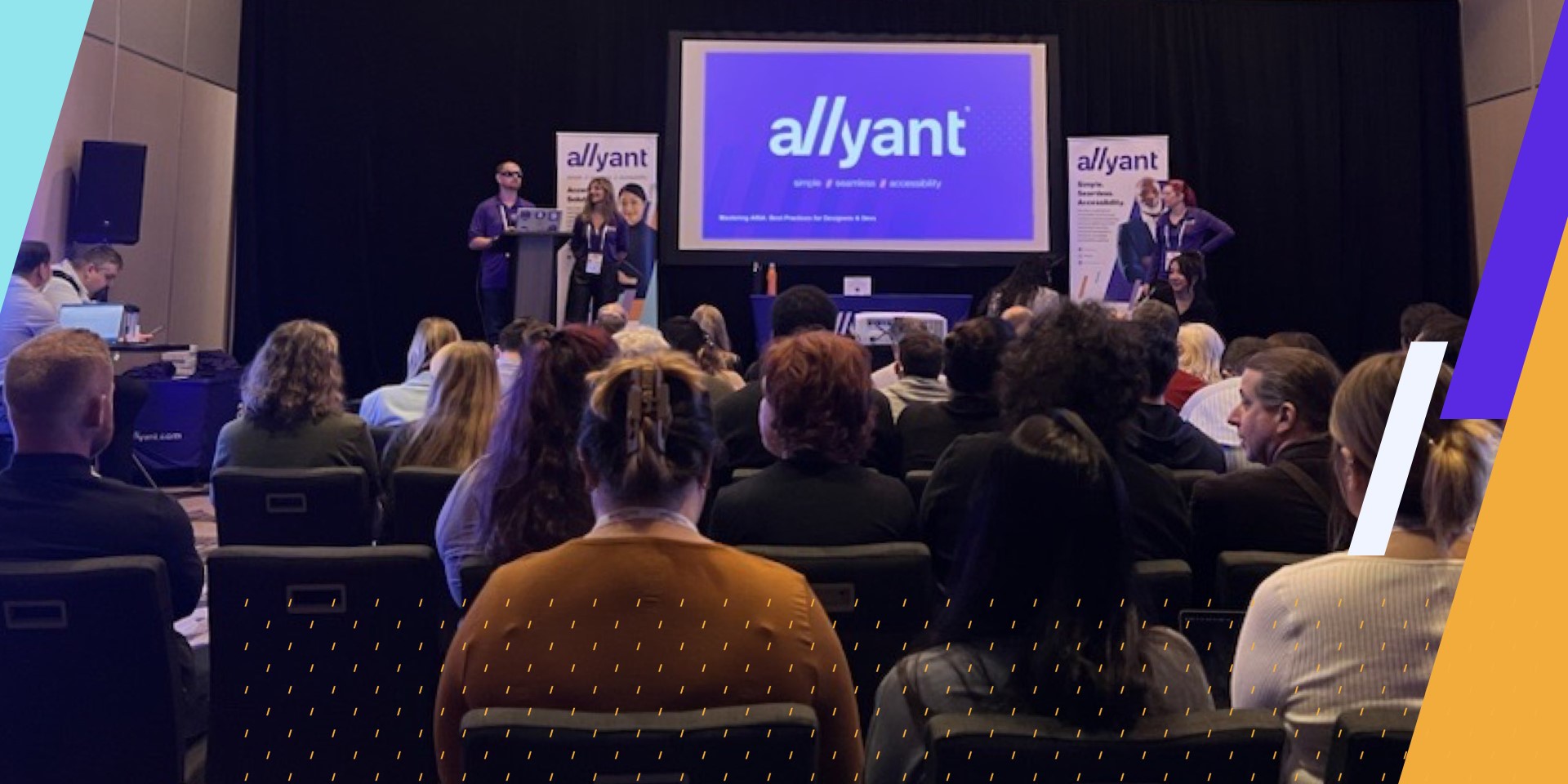This year, I had the privilege of presenting at CSUN 2024 on multiple topics on behalf of Allyant. In addition to the excellent opportunity to network and discuss Allyant’s solutions, CSUN was also a great opportunity to attend sessions and learn about various topics and developments in the accessibility industry.
In this article, I would like to highlight three things that were either completely new information to me or that really helped expand my knowledge in a particular area regarding accessibility.
HECVATs
One session I attended that I found particularly informative was “Security + A11y: Streamlining Higher Ed Vendor Reviews” during which the Higher Education Community Vendor Assessment Toolkit (HECVAT) was discussed.
This is not a form of accessibility documentation commonly seen in the industry, certainly when compared to VPATs and ACRs. Still, HECVATs have been gaining interest among accessibility professionals, primarily due to their unique approach of integrating product accessibility questions into the same form vendors use to provide information on data privacy and security.
An important fact regarding HECVATs, which I was unaware of until this session, is that the HECVAT template is broken into two versions: a “full” version and a “lite” version. Still, both versions contain the same 12 specific questions related to accessibility. If you are, therefore, less interested in the details regarding data privacy and security, and if your primary focus is on the product’s accessibility, then the “lite” version of the HECVAT will work for you.
For more information on the HECVAT, see the Higher Education Community Vendor Assessment Toolkit on the EDUCAUSE Library.
Mobile
Mobile accessibility was a prominent theme during this year’s CSUN conference. My team and I had the opportunity to engage in a wide variety of conversations regarding mobile accessibility and to attend various sessions on the topic. A few sessions in particular that our team found informative and valuable were “From WCAG to MCAG: Towards Mobile Accessibility Guidelines” and “Testing WCAG 2.1.1 Keyboard on Mobile”. A few takeaways regarding mobile include:
- Everyone in the industry generally seems to agree that WCAG, whether 2.1 or 2.2, is insufficient for native mobile apps.
- Organizations and experts interpret and apply WCAG requirements differently to mobile apps due to the lack of mobile-specific information and resources in WCAG.
- In some cases, there is disagreement/contradiction between WCAG, as interpreted by accessibility professionals when applied to mobile, and user interface guidelines provided by Apple and Android operating systems.
- Two facts that appear to not be in dispute among accessibility professionals regarding mobile:
- You must do keyboard testing on mobile, using a physical Bluetooth keyboard and without the screen reader running.
- Do not use emulators to test the accessibility of native mobile apps; use actual physical mobile devices instead.
Microsoft Teams
While I didn’t get to attend the “Increase Productivity in Microsoft Teams with JAWS” session, several members of my team did and shared some of their notes with me. As someone who is blind and uses screen reading software daily in a work environment that uses Microsoft Teams, the information I learned from this has already changed my life.
I think it also underscores the importance that first impressions may have on a user, and how difficult it can be to change user behaviors once established.
Microsoft launched an updated version of Teams last year with a redesigned user interface, and the previous version of Teams was labeled “Classic” Teams.
When the new Teams first rolled out, I and other users found it didn’t perform well with our screen reading software, and most of us reverted to using the “Classic” Teams as it provided a better experience. After initially testing the new Teams and reverting back to the “Classic” Teams, I never bothered to check again to see how the new Teams might have improved since.
During the session at CSUN this year, my team saw a demonstration of the new Teams being used with JAWS, and everything performed quite well. On top of that, the team heard about many useful keyboard shortcuts that have been added to the new Teams and are unavailable in the “Classic” version of Teams.
After hearing about this, I tested out the new Teams myself and found it to perform much more smoothly and the new keyboard shortcuts to be handy. I now use the new Microsoft Teams daily and have moved away from using the “Classic” version of Teams.
This experience underscores the importance of first impressions regarding accessibility – I and many other screen reader users eagerly tried out the new Teams when it became available, but as it didn’t appear to be accessible or compatible with our screen readers at the time, we switched back to the “Classic” version. Once that happened, there wasn’t much incentive for us to go recheck the new Teams to see if things had changed, and I would probably still be using the “Classic” version if it hadn’t been for this session at CSUN.

